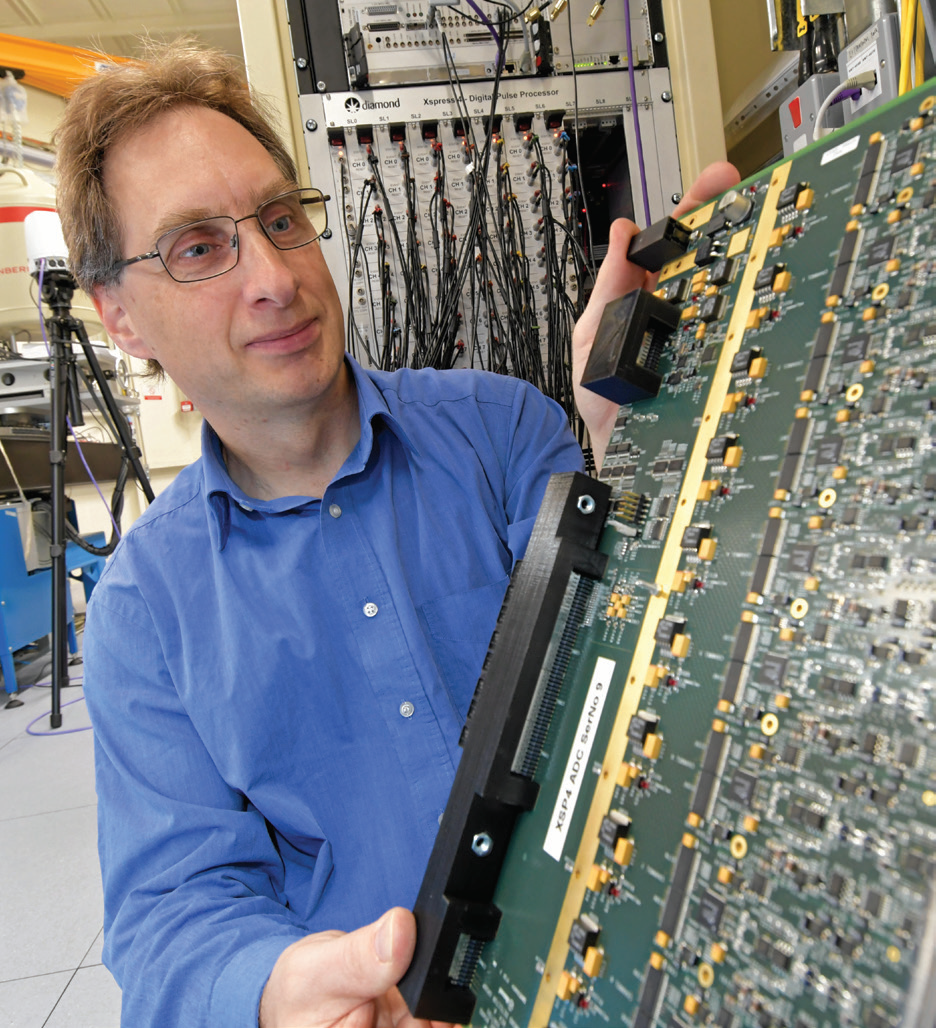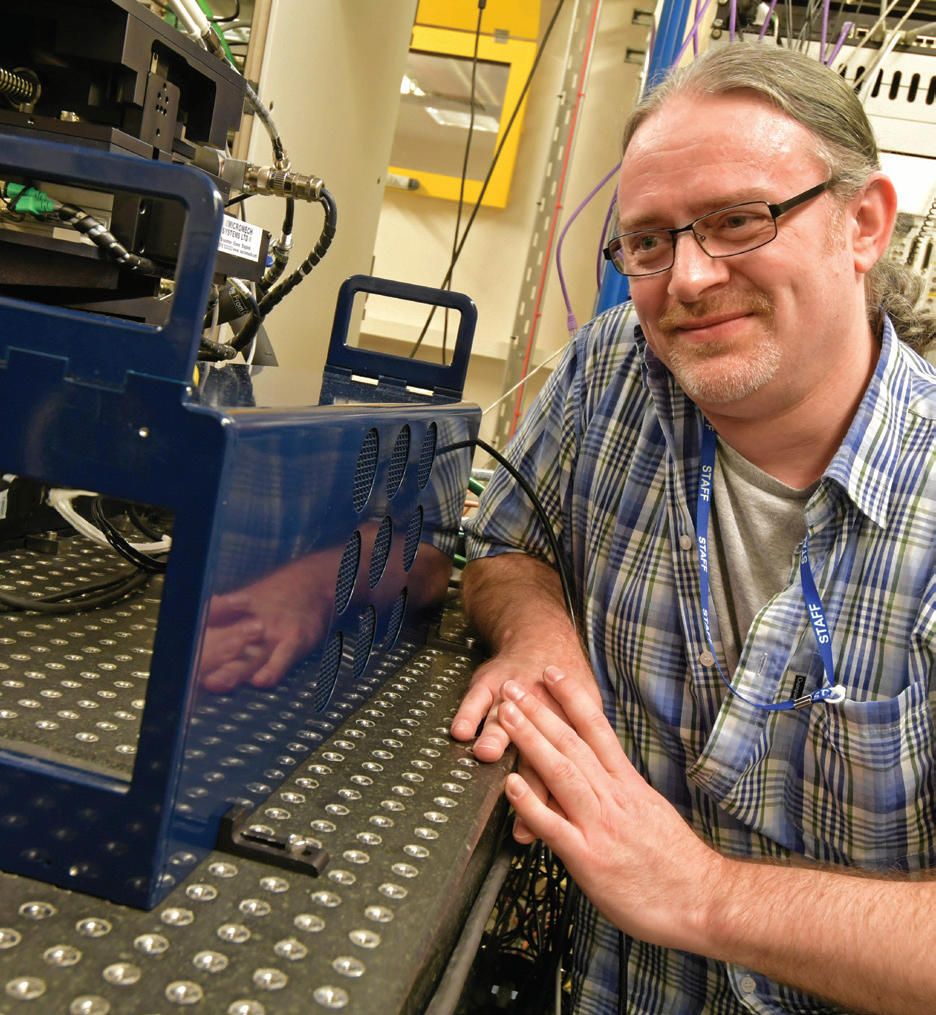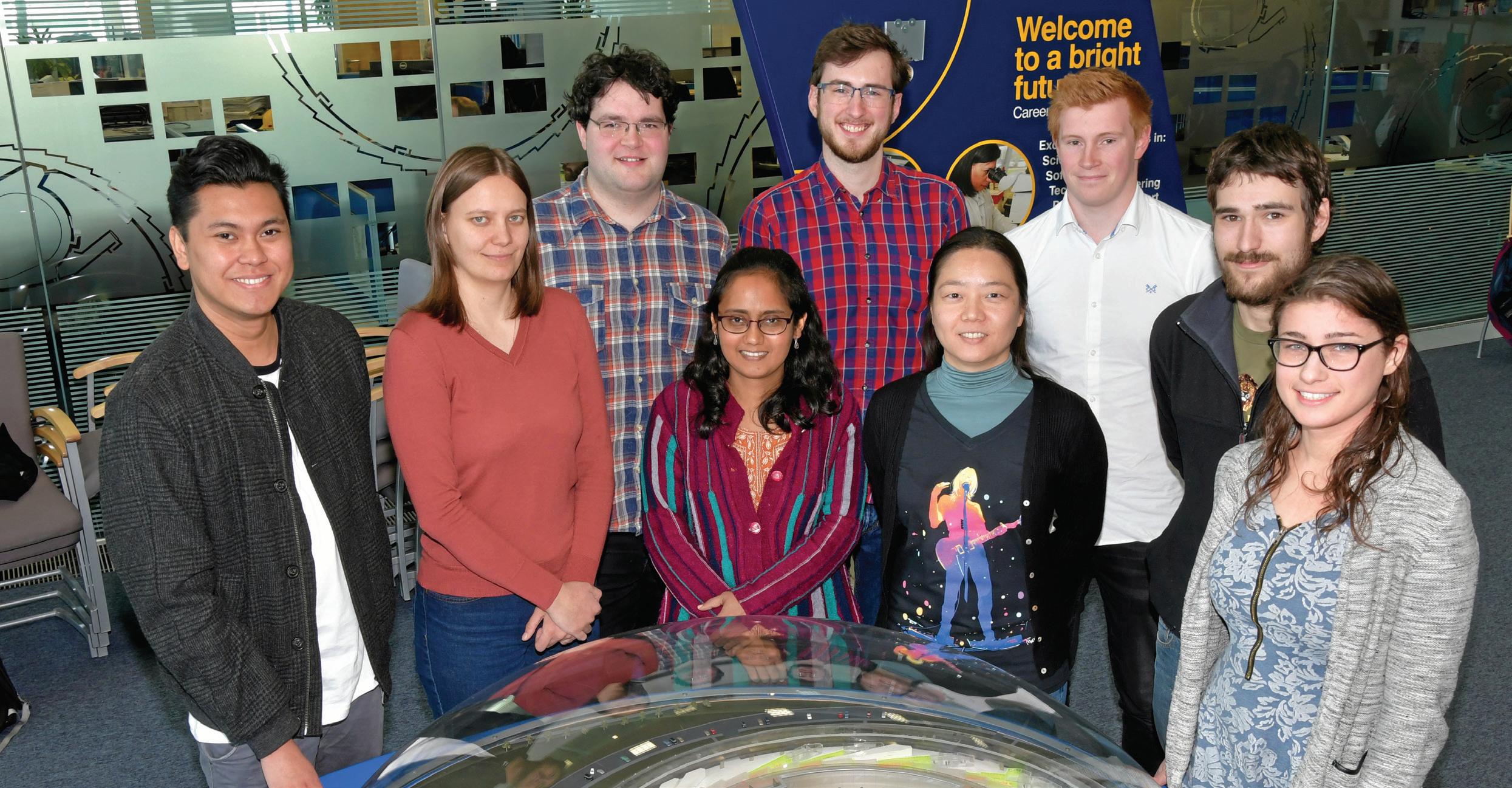
- Figure 2: Senior Electronics Engineer, Graham Dennis, with the Xspress-4 digital pulse
processor on I20.
The Scanning branch of I20 (I20-Scanning) exploits the high flux provided by the wiggler source through two different end stations. The XAS end station uses a 64 element monolithic germanium detector with the Xspress-4 read-out system to examine the structure of very low concentration samples. The X-ray Emission Spectroscopy (XES) end station uses a spectrometer based on a 1m Rowland circle geometry to perform high-energy resolution studies of the electronic structure of samples.
The development project for a new monochromator for I20-Scanning has progressed significantly over the last year. The vibration and cooling performance of a new wider first crystal has been tested extensively using a spare axis, mimicking the conditions of the beamline. This new crystal was installed in the beamline monochromator in March 2019, substantially improving the cooling characteristics of the device. It is anticipated that the performance of the new system will inform the design of an entirely new monochromator for I20- Scanning that will be better able to exploit the high photon flux delivered by the wiggler source, and extend the energy range of the beamline up to 34 keV.
The XES end station has benefitted from the installation of a four-element Medipix pixel detector, replacing the single element Medipix. This larger detector enables the detection of the diffracted fluorescence signal from the crystal analyser in a more straightforward manner, and eases the challenge of aligning the spectrometer. The use of the large Medipix detector has approximately halved the time needed to set-up the spectrometer and thus improved the efficiency of the beamline. To fully exploit the capabilities of the XES end station, a new closed cycle helium cryostat capable of reaching temperatures as low as 5K has been purchased. We expect to be able to make this cryostat available to the user community this year.
The Energy Dispersive EXAFS (EDE) branch of I20 uses a polychromator to perform XAS experiments in a dispersive geometry. It is designed for in situ and operando studies with time resolutions ranging from seconds down to milliseconds or even microseconds.
The popularity of user experiments on the I20-EDE branch that use different sample environments has continued to grow over the year. Using a bespoke sample cell, an experiment combining X-ray absorption and infrared spectroscopies, was performed to study a catalyst under operando conditions with a time resolution of 100 ms, while the beamline’s stopped-flow system was used to study oxide precipitation with a time resolution as low as 20 ms. In addition, the high pressure programme on the line has developed, with a number of users studying systems under high pressure in diamond anvil cells using both traditional EDE and turbo-XAS, which is a complementary sequential data acquisition mode. Materials at pressures up to 20 GPa have been examined.


